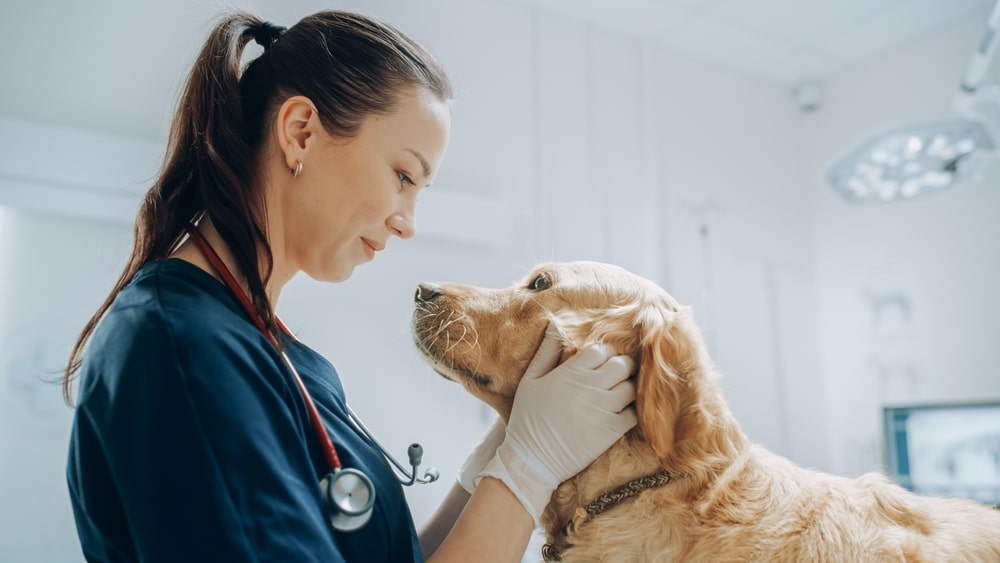Starting a veterinary practice can feel like an uphill battle, with many decisions requiring thoughtful consideration. Whether you’re figuring out the ideal location to open your clinic, determining the necessary equipment needed, building your clientele, or simply defining your business vision, there are many hurdles to overcome before opening day. However, by taking the right steps upfront, you can start laying a solid foundation for a thriving veterinary practice.
Ready to get started? Follow these suggested steps to start a vet clinic that will attract new clients
8 Steps to Starting a Veterinary Practice
1. Develop Your Business Vision and Goals
The first step in starting a vet clinic is to clearly define your business vision and set achievable goals.
Ask yourself:
- What key milestones should I target? Consider a target number of clients to serve or a revenue goal for the end of your fiscal year.
- What kind of clinic culture do I want to foster for employees and pet parents?
- What services will I provide (e.g., general care, emergency, specialty services)?
Write these goals down. Put them somewhere you’ll see them regularly. This clarity and repetition will serve as your guiding light to success, helping you stay focused and motivated while also measuring progress as your clinic evolves.
2. Understand the Necessary Expertise for Starting a Vet Clinic
Before opening a veterinary clinic, it’s crucial to have the knowledge and skills necessary to adequately handle the practice’s medical and business sides. If you’re a veterinarian, having your Doctor of Veterinary Medicine (DVM), for example, is a common prerequisite to starting a practice of your own. If you’re an experienced technician or other veterinary professional, ensuring you have a staff of qualified (and quality) vets to treat your patients is a must.
In addition to the proper training and education, prospective clinic owners should ideally have ample experience working in the field before opening a practice. Having this background ensures you can provide high-quality care for your clients, while effectively navigating the operational challenges of running a clinic.
For most veterinary clinics, hiring an effective practice manager can help ease the burdens of day-to-day tasks, giving vets and technicians time back to focus on what’s important to their role. The right practice manager can help you deliver excellent service and manage the administrative tasks that keep your business running smoothly.
3. Create a Robust Business Plan for Your Veterinary Practice
Creating a comprehensive business plan is a crucial step that helps ensure the success of your veterinary practice. Your business plan should consider service costs and expected revenue, along with a target number of clients you plan to serve or the maximum number of clients you could reasonably serve without expanding your business. It’s also important to account for operating expenses, including salaries, rent, equipment, and other overhead costs.
If you’re worried about straying from your business plan, don’t panic—remember that your business plan should not be static. It is a living document that will evolve as your practice grows; flexibility is key. The challenges you face, or the opportunities that arise, may require you to adjust the plan along the way, so maintaining flexibility and adaptability is essential for continued success.
4. Determine a Location to Open Your Clinic

Location. Location. Location. Where you call home can be a key strategy when deciding how to start a veterinary practice. A well-located clinic will not only be more accessible to clients but also set the stage for long-term growth. Several factors need to be considered when selecting your clinic’s location.
The proximity to potential clients is one of the most important considerations, as the convenience of your clinic’s location can impact client retention and satisfaction. Market dynamics in the area, such as the demand for veterinary services and competition from other clinics, should also be evaluated. Finally, local zoning regulations and any restrictions in the area should also be factored in to ensure that your practice is legally compliant.
5. Ensure Legal Compliance
Adhering to legal regulations is crucial when opening a veterinary clinic to avoid future setbacks or negative ramifications. This means registering your business as a legal entity, setting up a business account, and managing taxes to follow all local and national laws.
And don’t forget to double-check you’ve got all applicable permits and licenses relating to animal care and/or medical practices in your state or county. Finally, purchasing insurance is essential to cover liability and other potential risks that could arise during business operations. Consult with a legal professional during this stage to ensure you’ve covered all your bases.
6. Get the Right Equipment for Your Vet Clinic

Right, so your vision is outlined, and you’re legally compliant. Now what?
Equipping your veterinary clinic with the right tools and technology is essential for providing top-tier care and running a smooth operation. Some of the equipment you’ll need includes tools like:
- Diagnostic equipment: Imaging and lab equipment
- Office equipment: Computers, phones, furniture, etc.
- Practice management software: Systems to manage patient records, scheduling, and billing, and vet office software
- Payment processing: Point-of-sale systems for receiving payments
- Pharmacy inventory: Track and manage drug inventory and prescriptions
- Surgical equipment (if applicable): Instruments, anesthesia monitoring machines, and patient monitoring systems (pulse oximetry, blood pressure, etc.)
By securing the right equipment, especially when it comes to the software you use to run your operations, you’ll be able to provide better care and ensure the smooth management of your clinic.
Staying organized is key, and with so many moving parts, you’ll want to make sure your operations can handle themselves for the most part. Utilizing an efficient vet practice management software can help organize your operations from top to bottom, so you’re never scrambling for information, experiencing low inventory, or dealing with scheduling conflicts.
7. Hire Your Veterinary Team
The success of your veterinary clinic is directly tied to the quality of your staff. As you start recruiting, focus on filling vital roles, like veterinarians with specialized expertise, veterinary technicians who can assist in care, and practice managers who can handle administrative tasks, amongst other crucial support staff.
A well-rounded team will allow a comfortable working environment and efficient operations. Strive to create a positive and collaborative workplace, as it fosters a sense of trust and professionalism among your team and clients. The goal is to build a team that not only is passionate about animal care and dedicated to the practice’s success, but also that loves what they do. And note the word “team” here: As you select candidates, it’s important to consider the bigger-picture workplace culture you’re creating, and the team dynamics within. If your veterinary team loves what they do, they will be better able to enjoy their work and the people they work with. This, in turn, can create a positive workplace, encourage team retention, and help employees feel supported even in moments of high stress.
8. Market Your New Vet Clinic
Marketing plays a massive role in building your clientele and your clinic’s reputation. Consistent messaging across your marketing channels helps build an image for your brand. It also communicates trust and credibility—solidifying your clinic’s brand in the minds of your clients.
There’s a wide variety of techniques to market your veterinary practice: A branded website highlighting your services, team, and values, along with utilizing social media platforms can help you engage with your community, reaching a broader audience. You can also utilize local search engine optimization (SEO) that ensures potential clients can easily find your clinic when searching online. Considering community advertising, such as partnering with local pet-related businesses or sponsoring events, is another way to directly market to your target audience.
Plan for the Challenge of Starting a Veterinary Practice
Distinguish your veterinary practice through careful planning and navigation of your competition. Starting a veterinary clinic comes with its fair share of challenges. High startup costs are often the first hurdle, with purchasing the necessary equipment and setting up a facility being the second.
Recruiting and retaining skilled staff in a competitive job market can be tiresome, especially given the current market demand. Acknowledging these challenges early on is crucial. Try to develop strategies that mitigate their impact, like securing sufficient funding, offering competitive benefits, or differentiating your clinic with specialized services.
Equip Your New Clinic with the Best Veterinary Practice Management Software

Implementing the right practice management software is essential to streamlining operations and enhancing client care. The ideal solution offers a comprehensive set of tools designed to improve clinic efficiency while growing along with your clinic. DaySmart Vet management software includes features such as:
- Client engagement via email, text, and our PetCare mobile app
- Comprehensive scheduling tools
- Customizable SOAP notes (Subjective, Objective, Assessment, Plan)
- Detailed reporting and seamless integrations
- Simplified billing and payment processing
With seamless integrations and a cloud-based system, DaySmart Vet can modernize your clinic’s operations to help it run smoothly. We’d love to be a part of your team.
Get ahead of the game and learn about how to start a veterinary practice and set it up for success.

